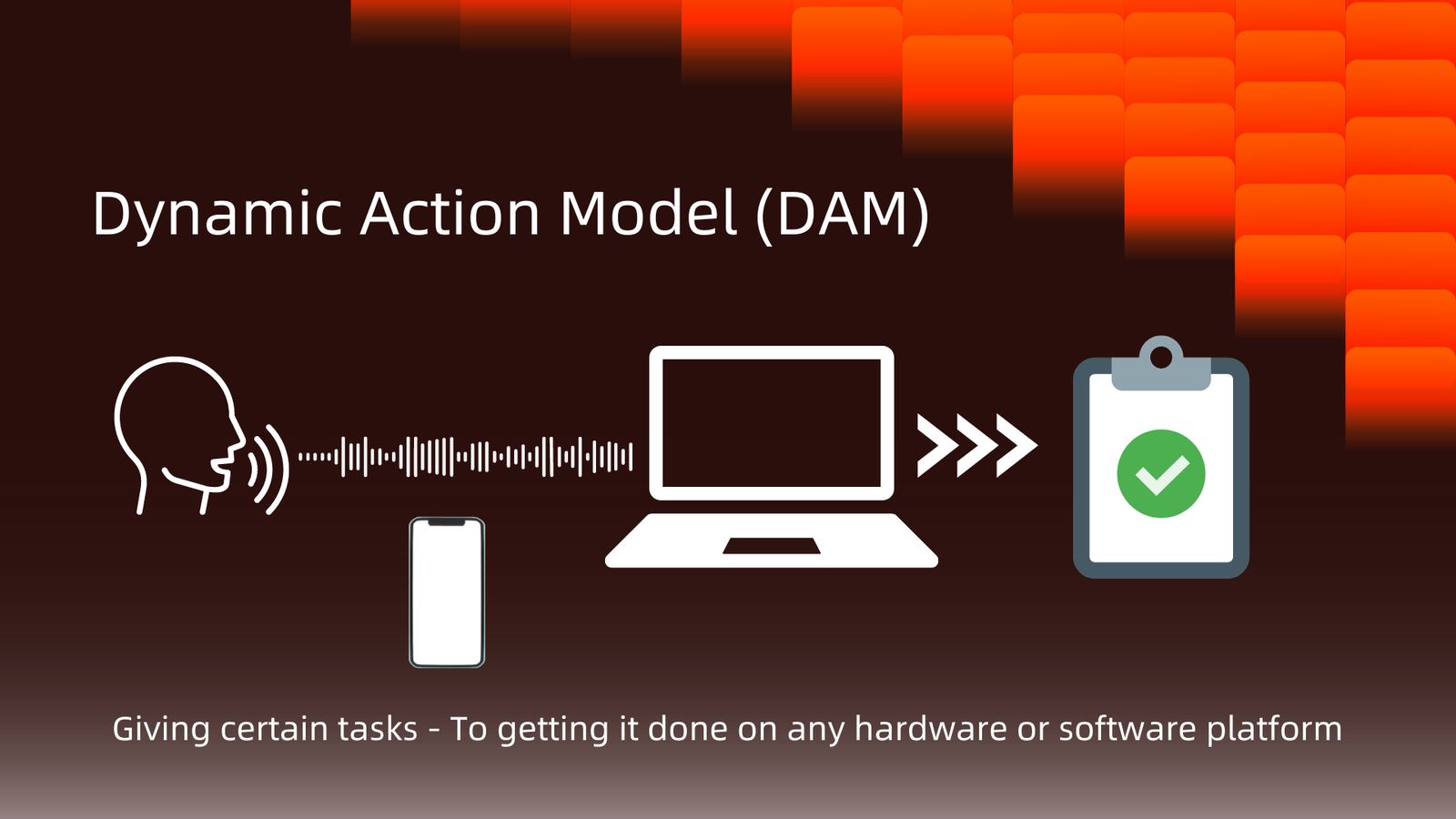In the rapidly evolving business landscape, enterprises are under constant pressure to optimize operations, enhance productivity, and maintain a competitive edge. OneBrain’s Dynamic Action Model (DAM) stands at the forefront of this transformation, offering an innovative AI-enabled Human-Machine Interface designed to automate computing tasks with unprecedented efficiency. This blog delves into the unique capabilities of DAM, highlighting its special business use cases and illustrating how it can redefine enterprise productivity.
Understanding the Dynamic Action Model
The Dynamic Action Model (DAM) is a next-generation AI framework that mimics human operator inputs and outputs to perform tasks. It analyzes screen content, determines necessary actions, and executes sequences of mouse and keyboard operations to achieve specific goals. Here are some key features of DAM:
Key Features of DAM
- Automate Computing Tasks: DAM replicates human interactions with software, automating tasks with the same precision and accuracy as a human operator.
- Prompt-Driven Interaction: It interacts with users through prompts, guiding actions and responses, ensuring seamless task execution.
- Learning While Working: DAM continuously learns and improves its performance based on user interactions and outcomes, making it smarter and more efficient over time.
- Universal Software Compatibility: It works on a wide range of software applications without requiring specific adaptations, providing versatility across various platforms.
- Workflow Automation: DAM streamlines and accelerates processes by autonomously executing tasks within workflows, significantly reducing manual effort and errors.
- Pre-Trained on Interfaces: Equipped with prior training on diverse user interfaces, DAM adapts quickly and operates efficiently in different environments.
The OneBrain Advantage: Specialized AI Models
OneBrain’s suite of AI models, including the UI Vision Model and Meta Llama 3, enhances DAM’s capabilities:
- OneBrain UI Vision Model: Trained on various user interfaces, this model understands and executes commands based on its comprehensive understanding of UI screens.
- Meta Llama 3: An open-sourced model fine-tuned to meet DAM’s requirements, it ensures accurate and efficient task execution.
Business Use Cases for DAM
1. Customer Support Optimization
For enterprises managing extensive customer support operations, DAM can significantly enhance efficiency. By automatically categorizing, prioritizing, and addressing support tickets, DAM ensures that critical issues are resolved promptly while routine inquiries are handled swiftly. This results in improved customer satisfaction and reduced operational costs.
2. Supply Chain Management
In supply chain management, the ability to make timely and accurate decisions is crucial. DAM monitors inventory levels, predicts demand, and automates reordering processes. It can also identify potential disruptions and suggest alternative solutions, ensuring smooth operations and minimizing downtime.
3. Human Resources Management
HR departments deal with a variety of tasks, from recruitment to employee engagement. DAM can streamline the recruitment process by screening resumes, scheduling interviews, and conducting preliminary assessments. Additionally, it manages employee data, tracks performance metrics, and suggests personalized development plans, fostering a more engaged and productive workforce.
4. Financial Planning and Analysis
Financial planning requires meticulous attention to detail and accurate forecasting. DAM assists in budgeting, financial reporting, and variance analysis. By analyzing financial data and market trends, it provides predictive insights that aid in informed decision-making, optimizing resource allocation, and maximizing profitability.
5. Marketing Campaign Management
Marketing teams can leverage DAM to plan, execute, and monitor marketing campaigns more effectively. The model analyzes customer behavior, segments audiences, and personalizes marketing messages. It tracks campaign performance in real-time, allowing marketers to adjust strategies on the fly and achieve better ROI.
Embrace the Future with OneBrain
OneBrain’s Dynamic Action Model is not just about automation; it’s about intelligent automation. It empowers businesses to do more with less, to be proactive rather than reactive, and to make data-driven decisions that drive growth and innovation. By integrating DAM into their operations, enterprises can unlock new levels of efficiency, agility, and competitiveness.
Conclusion
In a world where change is the only constant, staying ahead requires embracing the power of AI. OneBrain’s Dynamic Action Model offers enterprises a transformative tool to enhance productivity, optimize operations, and drive success. By automating routine tasks, making informed decisions, and providing real-time insights, DAM is set to redefine the future of enterprise efficiency.
Embrace the power of AI, data processing, and automation with DAM and transform your data into intelligent outcomes. Schedule a demo today and start your journey towards a smarter, more efficient enterprise.
Watch our video presenation on same




